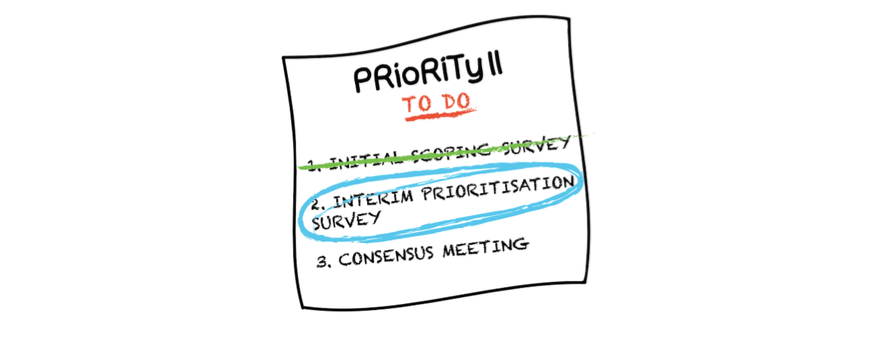Blinding: A detailed guide for students
Posted on 26th June 2017 by Saul Crandon

What is blinding?
Blinding is about ensuring that participants and/or personnel within a study are unaware of a particular element of that study. It is done to minimise bias [1,2]. Although blinding can be implemented in a range of study designs, for the purposes of this article, we will focus specifically on randomised controlled trials (RCTs). You will often see that RCTs are described as ‘double-blinded’. This means that both the study participants and researchers are unaware of the group allocations. In other words, neither the patients nor researchers know who is receiving the ‘actual’ intervention or the ‘dummy’ intervention.
There are a number of different levels of blinding:
Single = One party is blinded to treatment allocation, this usually refers to either patients only or researchers only
Double = Two parties are blinded to treatment allocation, this usually refers to patients and researchers
Triple = Three parties are blinded to treatment allocation, this usually includes patients, researchers and then other staff involved in the running of the study (e.g. data collectors, statisticians etc).
Common methods of blinding
One of the most common methods of blinding in RCTs is the use of seemingly identical medications; one ‘active’ pill and one ‘placebo’ pill. As they are physically identical, it is impossible for patients and researchers to discern which pill is the active one based on appearance alone. This is an example of robust blinding. If it is not robust, there is a risk of un-blinding. This is demonstrated well by a study of lavender and its relation to falls in the elderly [3]. Those receiving the lavender had a patch with the scent whereas controls were given a placebo patch. However, there is a risk that the patients themselves and their caregivers would also detect the lavender scent of those receiving the active intervention. This shatters the blinding process and hence, bias is then introduced either consciously or subconsciously.
Reports have found that less than 25% of RCTs adequately report blinding [4]. Moreover, the terms used for blinding have many different interpretations and are not universally defined [5]. Therefore, the CONSORT guidelines for the optimal reporting of RCTs recommends that blinding should not only be robust, but that the manuscript must explicitly state the method of blinding used as well as which parties in the trial were blinded [6,7]. It is not enough to simply state the trial is ‘double-blinded’ without further elaboration.
It is notoriously difficult to use blinding in surgical RCTs. This is because the patient is likely to know whether they have been cut open or not. To avoid this, often the tested intervention is an internal surgical technique or the wound is covered using the same large dressing and hence the patients are unaware whether or not they have received an active intervention.
However, it can be difficult to blind the surgeon to the tested intervention as they must perform the procedure. This still remains a challenge in medical research. (Although it is not impossible to blind surgeons: have a look at this for more information). It is recommended that the groups are treated as equally as possible, blinding should be attempted in other areas of the study and that any lack of blinding should be recognised in the limitations section [8]. This allows clinicians and other decision-makers to accurately appraise the study when deciding whether to use its results to inform their medical practice.
Why is blinding important?
Blinding is important for the validity of RCTs. Without it there are number of biases that are unwillingly introduced. It has been shown in an assessment of 33 meta-analyses, encompassing 250 RCTs, that without blinding, odds ratios were exaggerated by up to 17% (P=0.01). This highlights the importance of not just reading medical literature, but appraising it with a critical lens [9]. This is supported by other analyses of an array of methodological aspects of RCTs [10].
Knowledge of group allocations may affect behaviour in the trial. For example, researchers may assess patients who are receiving the active intervention more closely than those receiving the control and hence be more likely to pick up on beneficial and/or adverse effects. Similarly, if patients are aware that they are receiving the active intervention they may be more likely to check for side effects and be more likely to drop out.
Furthermore, there is a possibility that if the data collectors or statisticians are aware of treatment allocation then they may also provide a biased assessment of the group outcomes. Even if these people are trustworthy, differences can occur subconsciously, as part of human nature. To eliminate this and ensure independence, it is best that these people are also blinded in an RCT. The trend of going beyond ‘double-blinding’ to ‘triple-blinding’ is becoming more popular, as awareness of the methodological pitfalls in clinical research is improving.
Although more logistically challenging, it is best to blind participants, clinicians/researchers, data collectors and statisticians/data analysts. Ensuring everyone is unaware of treatment allocations minimises bias.
What about when blinding is not possible?
In cases where blinding is not possible or feasible, the outcome measures must be objective! If you are reading a study that is un-blinded, with subjective outcome measures, then you may as well stop reading it and move on. This is because, if a patient is aware they are receiving the active intervention and the outcome measure is subjective, such as ‘how much pain they are experiencing’, their reporting is likely to be biased. Knowledge of the group assignment can consciously or subconsciously cause the patient to feel better and report improved subjective pain tolerance. This is not a reliable study design and the results should not be interpreted with any certainty.
It should be emphasised that the use of objective outcome measures are not a replacement for robust blinding in clinical trials. Blinding should be used wherever possible.
Allocation concealment
Allocation concealment is ensuring that the person(s) randomising participants does not know what the next treatment allocation must be. This is an often underappreciated aspect of many trials that may lead to significant selection bias and invalid conclusions if not implemented [6,7].
CONSORT guidelines recommend that all RCTs have a robust method of randomisation to ensure its validity and minimise bias [6,7]. Even otherwise well-designed studies can be undermined if proper allocation concealment is not performed. If the randomisation sequence is widely available to the researchers then this can influence who is recruited.
For example, if the doctor is in clinic, they may believe a patient may not perform well with the experimental drug. As a result, the clinician may ‘skip’ this patient and not recruit them. Similarly, if the clinician knows a particular patient that they think will be ‘good’ for the experimental drug group, and the allocation sequence is known, they may ‘skip’ the prior patients so that the patient they want is assigned to the experimental drug. These scenarios compromise the randomisation process and introduce bias.
The traditional method of using sealed envelopes for allocation is not robust. It has been documented that researchers have used a bright light to see through these envelopes, or that the envelopes have been opened prior to a clinic starting. Instead, best-practice recommends the use of external randomisation sequencing and delivery of the allocation via telephone. This prevents researchers from potentially influencing the allocations.
Summary
- Blinding is an important foundation for ensuring internal validity and reducing observer bias
- Blinding must be robust and methods of blinding should be reported in detail
- Where possible, RCTs should be at least double-blinded, and should have more blinding where possible (this includes: patients, clinicians/researchers, data collectors and statisticians)
- Where blinding is not feasible, this should be recognised as a limitation and blinding should be attempted in other areas of the trial
- Outcome measures should ideally be objective, particularly when blinding is not possible
- Allocation concealment is important to prevent allocation bias
- Allocation concealment should ideally be performed using an external, independent telephone system





No Comments on Blinding: A detailed guide for students
This is such a great post
Salima
3rd May 2023 at 9:08 amthanks for share your valuable posting.
18th April 2023 at 10:36 amThe article was very interested .
13th April 2023 at 9:59 amHello mr crandon.
26th October 2022 at 9:11 amIs it feasible we set up a before- after clinical trial which we blinde the researcher not patient(single blind) and our control consume traditional medication and case get new medication? Will this study valid or we must blind both of patients and researcher?
Best regard.
Dear Ali. I’m sorry for the delay in replying to you. One of my colleagues has suggested this article: Schulz, K. F., & Grimes, D. A. (2002). Blinding in randomised trials: hiding who got what. The Lancet, 359(9307), 696–700. doi:10.1016/s0140-6736(02)07816-9 as being a useful guide for you. It is, unfortunately, behind a paywall, but I hope you have access through your institution. I hope this provides some clarity to your situation. Many thanks. Emma.
4th November 2022 at 3:32 pmThe article was very easy to read and easily understood. I appreciate that because it makes the learning enjoyable as well. Very interesting article
26th May 2020 at 6:24 amplease very interested in all biostats topics, keep me updated
13th August 2018 at 5:16 pm